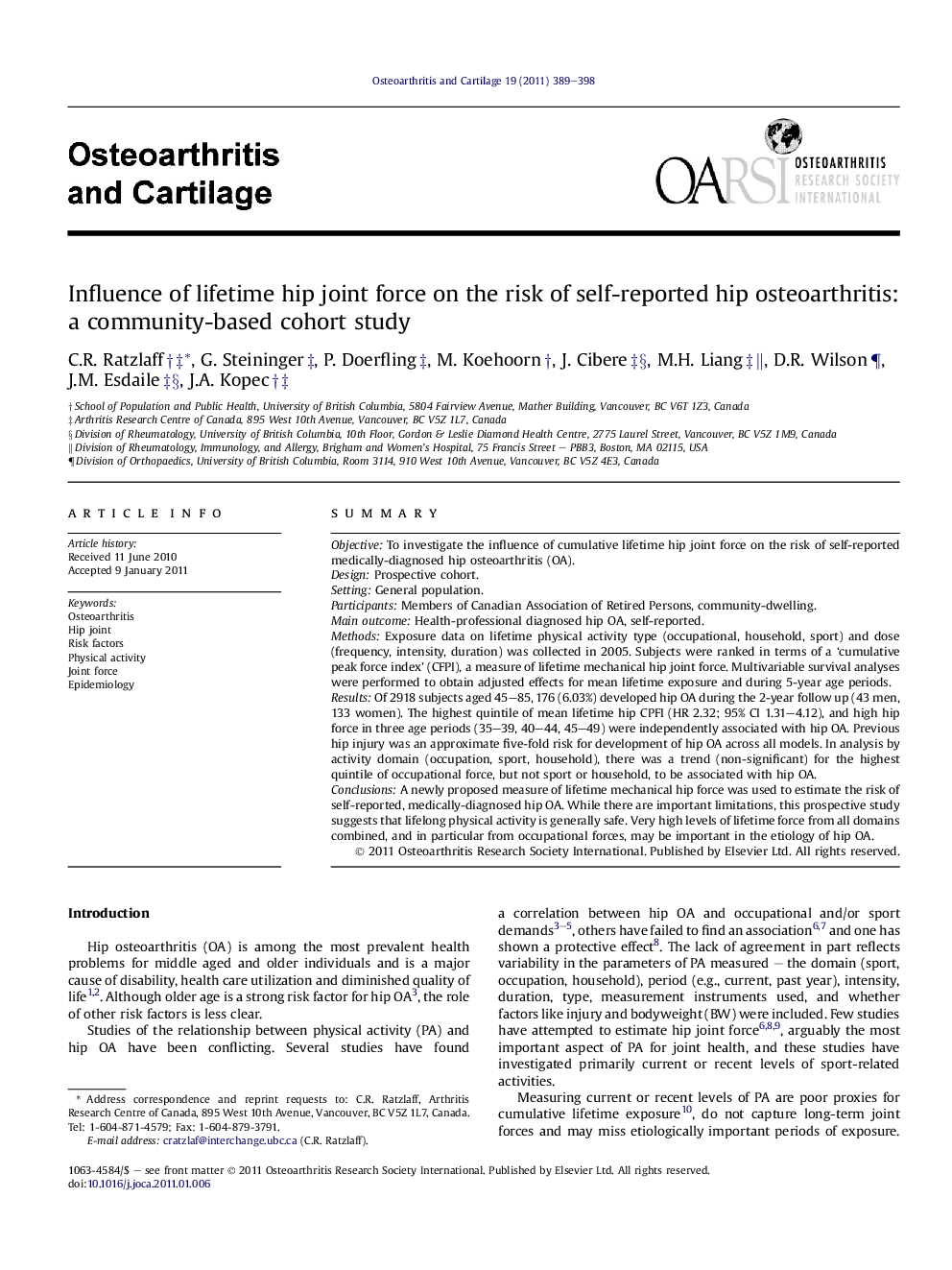| Article ID | Journal | Published Year | Pages | File Type |
|---|---|---|---|---|
| 3380415 | Osteoarthritis and Cartilage | 2011 | 10 Pages |
SummaryObjectiveTo investigate the influence of cumulative lifetime hip joint force on the risk of self-reported medically-diagnosed hip osteoarthritis (OA).DesignProspective cohort.SettingGeneral population.ParticipantsMembers of Canadian Association of Retired Persons, community-dwelling.Main outcomeHealth-professional diagnosed hip OA, self-reported.MethodsExposure data on lifetime physical activity type (occupational, household, sport) and dose (frequency, intensity, duration) was collected in 2005. Subjects were ranked in terms of a ‘cumulative peak force index’ (CFPI), a measure of lifetime mechanical hip joint force. Multivariable survival analyses were performed to obtain adjusted effects for mean lifetime exposure and during 5-year age periods.ResultsOf 2918 subjects aged 45–85, 176 (6.03%) developed hip OA during the 2-year follow up (43 men, 133 women). The highest quintile of mean lifetime hip CPFI (HR 2.32; 95% CI 1.31–4.12), and high hip force in three age periods (35–39, 40–44, 45–49) were independently associated with hip OA. Previous hip injury was an approximate five-fold risk for development of hip OA across all models. In analysis by activity domain (occupation, sport, household), there was a trend (non-significant) for the highest quintile of occupational force, but not sport or household, to be associated with hip OA.ConclusionsA newly proposed measure of lifetime mechanical hip force was used to estimate the risk of self-reported, medically-diagnosed hip OA. While there are important limitations, this prospective study suggests that lifelong physical activity is generally safe. Very high levels of lifetime force from all domains combined, and in particular from occupational forces, may be important in the etiology of hip OA.
